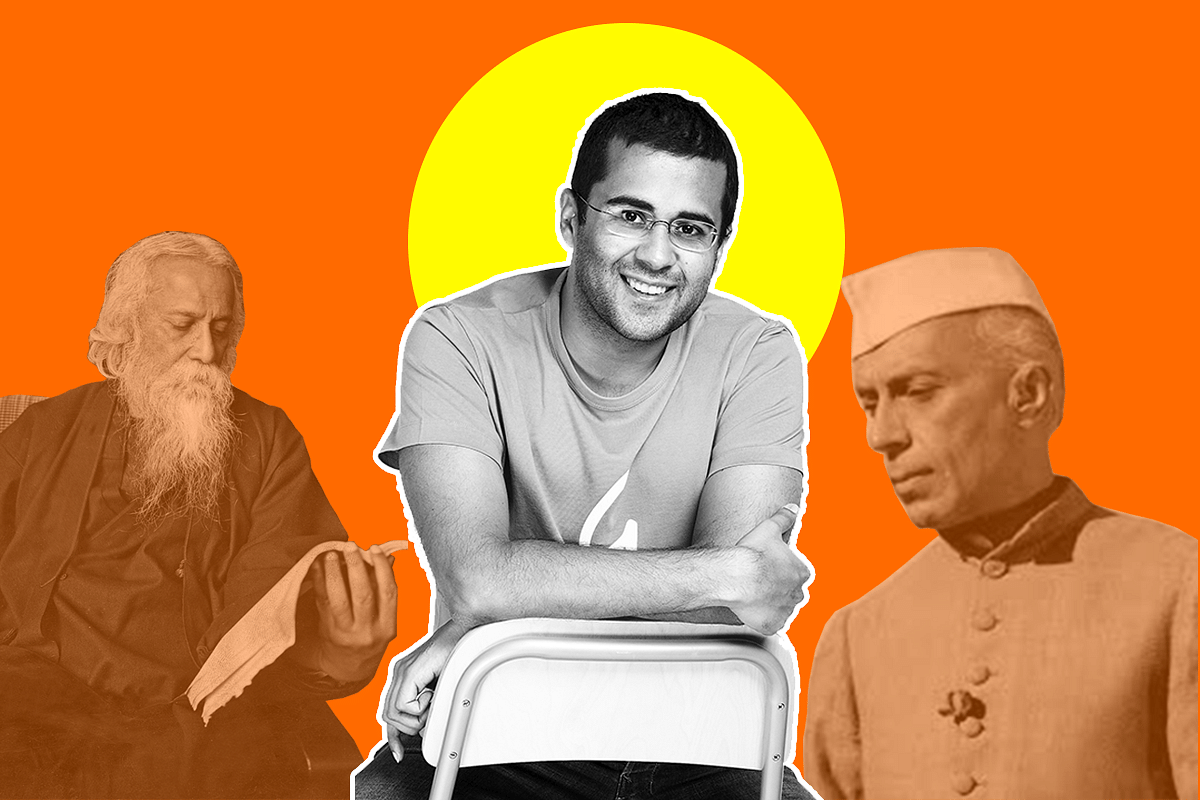Ideas
Dear Chetan Bhagat, Hindu Rashtra Is Not A Goal To Be Attained But The Existing, Lived Reality Of Holding India Together
- The realisation of a unique Indianness is what Hindu Rashtra is. It is not a goal to be attained by the state, but a realisation in the minds of the people.

Chetan Bhagat has written a piece in a daily commenting on ‘Hindu Rashtra’
Chetan Bhagat, the popular fiction writer, has penned a piece in The Times of India titled, ‘Why a prosperous, harmonious Hindu Rashtra is an impossibility’.
The piece is interesting because it shows the kind of misunderstanding even a fairly non-Hinduphobic writer has about the idea of a Hindu Rashtra.
According to him, Hindu Rashtra comprises of "one or more of the following":
Superficially, the arguments have a feel-good sense to them. But they fail to stand scrutiny and play on popular misconceptions than truth.
Hindu Rashtra Is Not A Goal But A Realisation
Hindu Rashtra is India. It is not a political goal to be attained. It is the living cultural, historical and spiritual reality to be realised. It permeates the entire nation and every community. It sustains the pluralist nation as one and it animates India.
When one realises this truth, Hindu Rashtra dawns. Perhaps, our writer himself reveals this when he talks about figuring out how "we" can achieve maximum glory for "our religion" and "our culture”.
This realisation of identity is what Hindu Rashtra is. It is not in the tools of the state but in the hearts of the people.
Leave aside Chetan Bhagat, Pandit Jawaharlal Nehru himself had this realisation.
When his friendly communist opponents (who considered Nehru a lackey of imperialism) asked him to emulate the Soviet form of multi-nationalism, Nehru categorically answered that India was different. He had earlier declared that India was "cultural unity amidst diversity… held together by strong but invisible threads”.
It is this unity in diversity what we call Hindutva and its realisation individually and collectively is Hindu Rashtra.
Just a cool fact here: it was Rabindranath Tagore who, two decades before Veer Savarkar, used the term Hindutva as a nation-building process.
He stated that it "is difficult to ascertain where lies the root of Hindu-ness (Hindutva)” (his words). Hindutva’s "circumference is as large as it is difficult to find its centre", said Tagore.
Most probably it is from this Hindutva definition of Tagore that Nehru got his own realisation of the "strong but invisible threads”, which hold India together.
India held together by her Hinduness or Hindutva is Hindu Rashtra.
The realisation of this unity in diversity or diversity as the infinite manifestation of the underlying unity is the realisation of Hindu Rashtra. It is this which is the best guarantee against communal riots and for social harmony and progress.
Let it also not be forgotten that inspiration from religion can help a nation thrive.
Biblical verses on peace and prosperity have inspired seven decades of scientists in Israel to help make the planet a better place. Israel is a modern democracy that celebrates its pluralism but it is also an ancient Jewish nation.
India is too a Hindu nation and we are Sanatanis and Arya Samajists, Shaivaites, Vaishnavaites, Advaitins and Dvaitins, Sikhs, Jains and Buddhists, goddess worshippers, animists and atheists and also Christians and Muslims — Sunnis, Shias and Ahmadiyyas.
Similarly, let us also not forget that economic prosperity and growth of a nation need not necessarily translate into glory of the nation’s religion and culture.
China made a tremendous leap in economic growth and also science and technology —from quantum teleportation to growing plant on the other side of the moon. But China has wiped out in decades its glorious diverse pluralist natural religion — Taoism.
In South Korea, the indigenous religions have been fighting for survival against evangelical onslaught even as it undergoes economic development. Economic growth in itself is no assurance for the glory of the culture and religion of the people.
In India too, evangelical wars and proselytising plans are in full swing and in many places this war is tearing apart families and communities. It has the potential of making a million killing fields across India.
Protecting not only religious but also secular minorities like gender minorities is the duty of a pluralist democracy. But it also has to ensure that the monopolistic proselytisation drive of aggressive transnational religions does not destroy the theo-diversity of the nation.
Protecting Theo-Diversity Of This Land Is Hindutva
A realisation that a Hindu Rashtra already exists — a national Tat tvam asi moment — is the best and only practical option for a harmonious and prosperous India, which also shall remain as India.
Introducing ElectionsHQ + 50 Ground Reports Project
The 2024 elections might seem easy to guess, but there are some important questions that shouldn't be missed.
Do freebies still sway voters? Do people prioritise infrastructure when voting? How will Punjab vote?
The answers to these questions provide great insights into where we, as a country, are headed in the years to come.
Swarajya is starting a project with an aim to do 50 solid ground stories and a smart commentary service on WhatsApp, a one-of-a-kind. We'd love your support during this election season.
Click below to contribute.
Latest